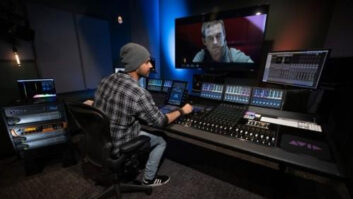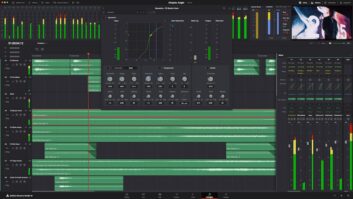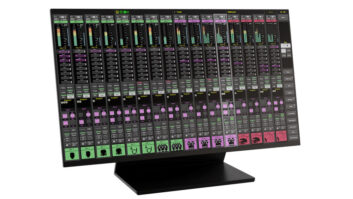
All through high school and years beyond, I played in bands. I made my living that way. When I first moved to L.A. after a year of college, it was to study with great guitar players and interact with a better pool of musicians. Los Angeles was and is a hub for musicians, much like Austin is now—a place where live music is everywhere and live recordings capture the moment.
advertisement
From the studio side, the concept of a band was elevated to art 50 years ago when musicians played live in studio and made records that drove generations. Then, as the song from Quincy Jones’ album Body Heat tells us, “Everything Must Change.” From the 1960s forward, you can trace how technology, endless tracks and digital production has made it less necessary for musicians to play off each other.
But like skinny ties, The Beatles, vinyl, Don Draper and hipsters, making real music is again en vogue. Right now in Nashville, recording musicians in the same room is hot and contagious. Jack White, Kings of Leon and engineers like Peter Coleman and Ken Scott have set up shop here. Ken’s chops come from that era where recording live musicians in the same room was it.
Bands live eat, and sleep in vans and crowded hotel rooms together; why shouldn’t they make music with the same level of camaraderie. Fans and bands are getting it. I recently watched Ken Scott work with Ryan Ordway and his band during a week of sessions at The Blackbird Academy.
The cool thing to watch was first how gassed the musicians were to be there in the presence of the master. This was a band of young, accomplished players who are like many of the bands playing at SXSW this month: Hungry and talented believers in the future of music and what they can bring to it.
Ken was right there with them, collaboration was king and the age divide was gone. It was great to watch how he was mixing from the first downbeat. He spent more time standing in front of the drums while the drummer hit them and making suggestions than he did bringing up sounds at the console. In other words, get it right at the source first, then press the red button. The toms are too tubby, can we put some tape here? Can you tune the snare to make it less edgy? Have another snare? Perfect!
It’s nothing anyone hadn’t done before, but the sum of tweaks added up to a larger total. What Ken was doing was essential to the vibe and outcome of the recording. The musicians, students and seasoned pros in attendance were eating it up. If I had to sum up the attitude of the players, it was as if no one had cared this much how their instruments sounded before. There was a hunger for excellence and a drive for what the interplay between audio pros and musicians in a great studio can bring.
It was all about taking it to the next level. For instance, there was a steel guitar part suggested by band member Ryan Hommel. Ken sat and listened intently, then said, “We need to make this sound less like a steel guitar. Do we have a Leslie?” We did. Once it was all hooked up, the part took on another meaning and was one of those hooks on a record that prompt you to say, “How cool is that?” Multiply these descriptions by ten and you get an idea of what went on.
I sat in on a session with engineer Ben Fowler just last night as he was setting up for an A-list of Nashville session players. While it wasn’t a band, per se, these guys make music together more often than many established groups. Drummer Shannon Forrest, Mark Hill on bass, guitarists Brandon Hood and Jerry McPherson, along with artist Steve Olsen—all there to make a record. When I asked Ben about the setup, he said he wanted the musicians placed closely together so they could vibe. The only player who was isolated was Steve, who put down a scratch vocal on the first pass, and Brandon, who produced and played acoustic guitar. Everyone else was in the room and it was fantastic. We had all heard the demo as they played it for the band in the control room, then the pros went out to the studio and took it up 20 notches. Ben moved some mics and changed some preamps, Shannon tuned his drums to perfection, Mark provided more growl from his bass rig and Jerry did what they called his “Jerry thing.” It was an amazing collaboration at a high speed and large scale, and it all worked.
The point is that music is at its best when those with diverse backgrounds join forces. Even Daft Punk’s Random Access Memories, a record you wouldn’t consider “live,” blended a range of talents. Engineer Mick Guzauski, producer/writer/musicians Nile Rodgers and Pharrell Williams, and of course those shy, French, robot dudes who spent two years putting it all together and made it happen. I love that record. It sings with art, spunk, and infectious grooves. In my book, if it makes you forget yourself and feel good, it’s real music.
No matter how much music production changes, we always get back to the essential truth. Humans are at their best when they’re making things together. Be it art, architecture, music or a connection with that person sitting next to you, the tools and techniques may change, but the foundations stay the same if we’re lucky: Rain comes from the clouds. Sun lights up the sky. And hummingbirds do fly.







